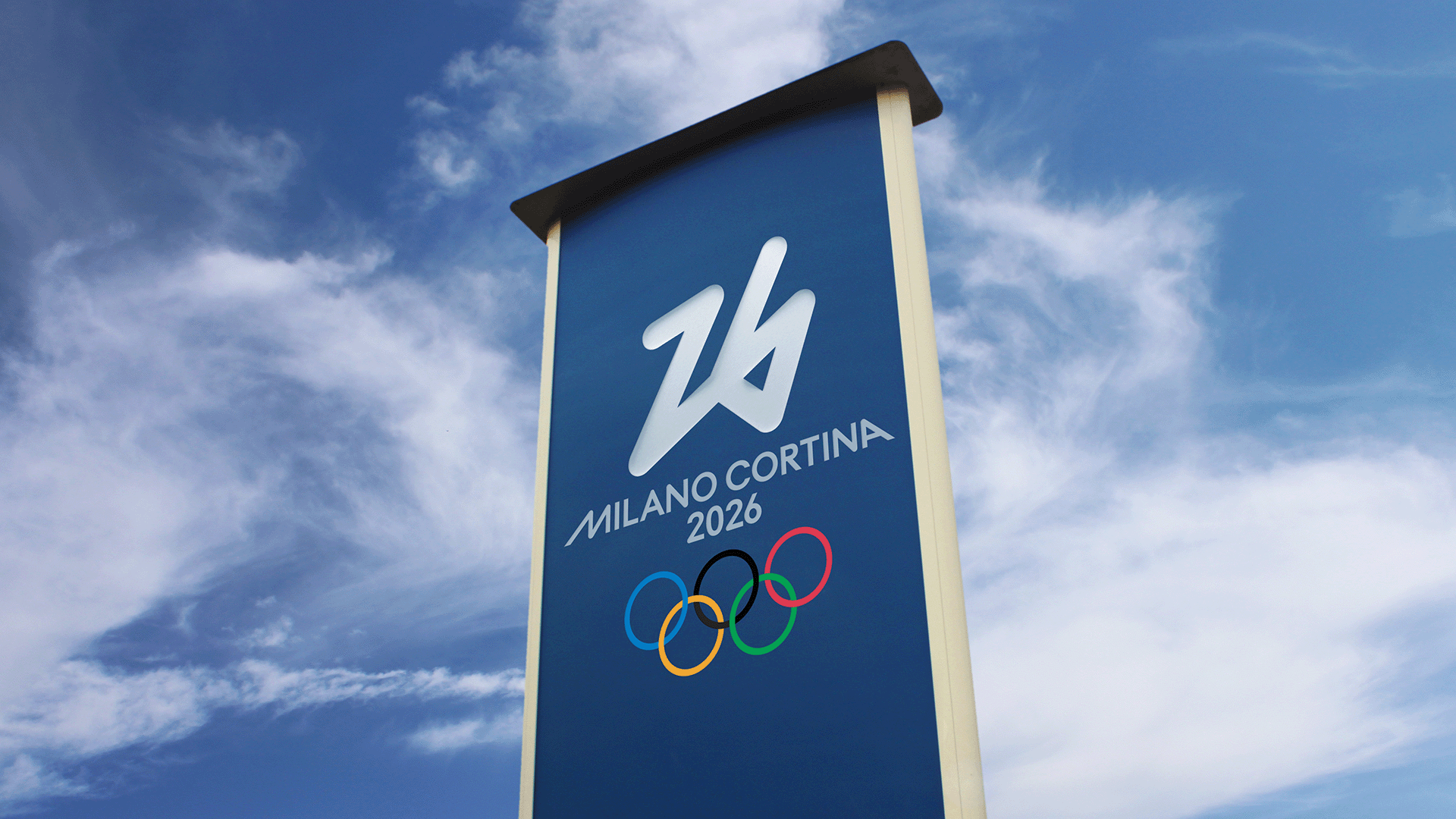As the world looks toward the Milano Cortina 2026 Winter Olympics, the excitement in the air is unmistakable. Italy will welcome more than 1 million visitors to its snow-covered peaks and vibrant city streets—from high-speed alpine skiing to the artistry of figure skating. It will also be the most widespread Winter Olympics and Winter Paralympics ever.
But with this unparalleled spectacle comes a responsibility: ensuring the safety and security of everyone who steps onto the ice, snow, or stands to compete or cheer. The challenges are complex—spanning across both physical and cyber domains—and require the integration of cutting-edge technology and seamless coordination between authorities.
What Are the Unique Security Challenges of the Winter Olympics?
Distinct from the Summer Games, the Winter Olympics shine a spotlight on sports that demand mastery of both skill and elements. Events occur in open mountainscapes and high-tech indoor arenas alike. The unpredictability of weather and the technical nature of winter sports—from the synchronized chaos of a bobsled run to the precision needed for biathlon—add to the excitement and challenge.
In addition, while the Summer Olympics are often concentrated in one major city, the 2026 Winter Games will be spread across a vast geographical area, from the urban environment of Milan to the remote mountain villages of Cortina d’Ampezzo. This decentralized format introduces complex security variables.
Extreme Weather and Remote Venues
The very nature of winter sports creates significant logistical hurdles. Alpine skiing, bobsledding, and snowboarding events take place in mountainous regions that are often difficult to access. Security personnel must contend with:
- Unpredictable Weather: Blizzards, avalanches, and extreme cold can disrupt events, compromise infrastructure, and create life-threatening situations. A sudden snowstorm can cut off access roads, hinder emergency services, and leave thousands of people stranded.
- Geographical Dispersion: With venues scattered across hundreds of kilometers, maintaining a consistent security perimeter is nearly impossible. This requires a more dynamic and intelligence-led approach to monitoring potential threats across multiple locations simultaneously.
- Challenging Terrain: Patrolling rugged, snowy terrain is far more difficult than securing an urban stadium. Emergency response times can be significantly longer, making early detection of incidents absolutely critical.
Crowd Management in Dynamic Environments
Managing large crowds at a winter event presents its own set of problems. Spectators will be moving between indoor arenas in Milan and outdoor slopes in the Dolomites. Security teams need to manage the flow of people through transportation hubs, fan zones, and event venues, all while being prepared for weather-related disruptions. A sudden venue change due to poor snow conditions, for example, could create chaotic and potentially dangerous crowding at an alternate location if not managed effectively.
The Ever-Present Cyber Threat
The Paris 2024 Olympics faced more than 140 cyber attacks, and this Winter Olympics could see similar threat activity. Vulnerabilities include:
- Digital Infrastructure: Ticketing systems, broadcast feeds, and scoring networks are prime targets for ransomware or denial-of-service (DDoS) attacks.
- Disinformation Campaigns: Malicious actors may use social media to spread false information, such as fake security threats or event cancellations, to create panic and chaos.
- Cross-Domain Threats: A cyberattack could be used to disable physical security systems, such as surveillance cameras or access controls, to facilitate a real-world incident.
Best Practices for Securing the 2026 Winter Olympics
Addressing these multifaceted challenges requires a proactive and integrated security strategy. By combining proven best practices with cutting-edge technology, organizers can build a resilient security framework.
Unified Emergency Response Planning
Coordination is everything. A centralized command center that integrates law enforcement, private security, and emergency medical services is essential. This unified command team must conduct regular drills based on scenarios unique to the winter environment, such as mass evacuations during a blizzard or responding to an incident in a remote, high-altitude location.
Advanced Cyber Defense
A robust cybersecurity plan involves more than just firewalls. Organizers must implement a multi-layered defense strategy that includes continuous threat monitoring, penetration testing, and employee training. Furthermore, social media monitoring is crucial for identifying and debunking disinformation campaigns before they can gain traction and incite public disorder.
Intelligence-Led Crowd Management
Instead of relying solely on physical barriers, security teams can use real-time data to manage crowds dynamically. Staying abreast of public data sources and social media can reveal patterns of overcrowding at a train station or an unsanctioned gathering near a venue. This allows security personnel to redirect foot traffic or deploy resources to prevent bottlenecks and potential crushes before they occur.
The Role of AI-Powered Event, Threat & Risk Intelligence in the Winter Games
Manually monitoring the millions of digital signals generated during an event as widespread as the 2026 Olympics is impossible. This is where Dataminr becomes a game-changer for security operations.
By analyzing over a million public data sources in real time—including social media, news feeds, and IoT sensors—Dataminr’s AI platform can detect the earliest signs of a disruptive event. Eyewitnesses are often the first to report incidents, sharing text, photos, and videos from their mobile devices. Advanced AI models are trained to instantly identify these signals, verify their credibility, and deliver actionable alerts to security teams.
Dataminr Intel Agents—its groundbreaking Agentic AI capability—are tasked with autonomously determining the additional context that’s needed, where to look for it, and how to best synthesize what they find into concise text. The critical context provided by Intel Agents empower organizations and security teams to understand, triage, and respond to real-time events. This Agentic capability is available in all of our products, including Dataminr Pulse for Corporate Security, Pulse for Cyber Risk, and First Alert.
For the 2026 Winter Games, this means security leaders and teams can receive:
- Hyperlocal weather alerts: An AI alert could flag social media posts showing the beginning of a whiteout condition on a mountain pass, giving officials time to close the road and reroute traffic.
- Early indications of threats: Dataminr can detect the first mentions of a suspicious package at a transportation hub or a fight breaking out in a fan zone, enabling a faster security response.
- Real-time situational awareness: Intel Agents give security leaders a continuously evolving picture of the situation, allowing them to make informed decisions with confidence, whether it’s a power outage at a venue, cyber threat or public safety disorder.
By embracing a forward-thinking security strategy that integrates proven Olympic best practices with AI-powered real-time intelligence, organizers can better mitigate risks and disruptions, safeguarding the 2026 Winter Olympics—as well as the 2026 Paralympics Winter Games—experience for athletes and fans.

Strengthen Major Event Security with Dataminr
Learn how Dataminr can help your organization stay ahead of risks and ensure safe and successful events.
Request DemoOlympic Security: Event Detection From Paris 1924 to Paris 2024
It's been 100 years since Paris last hosted the Olympic Games. Many of the same security challenges remain, but AI and an unprecedented amount of public data has changed how to protect large-scale events.
Learn More




